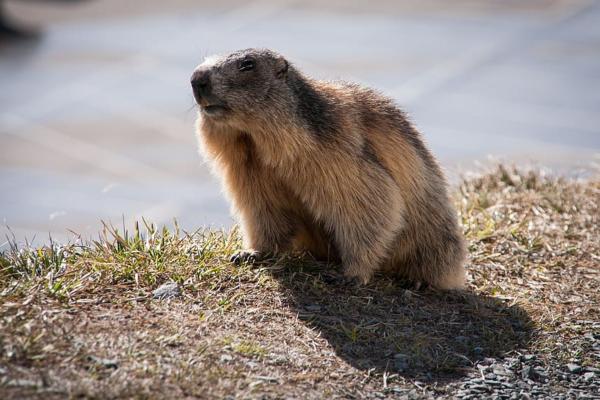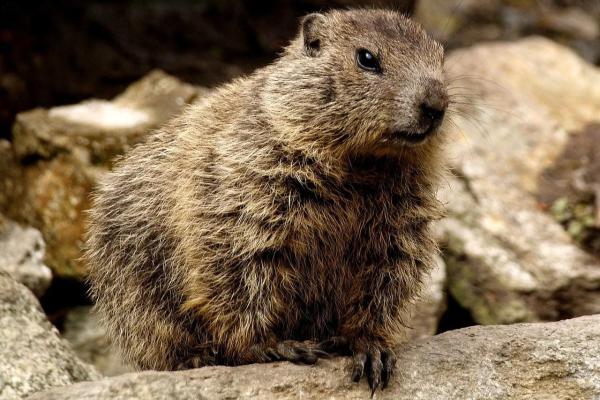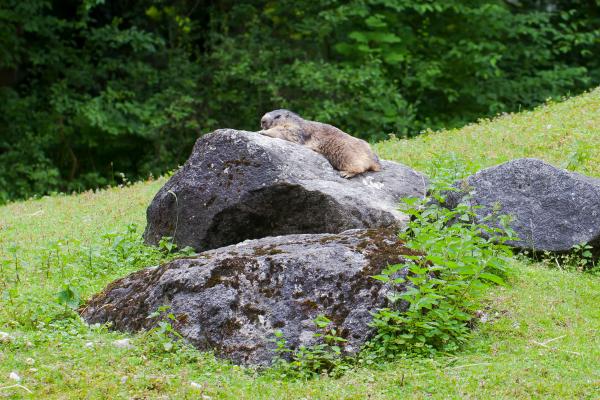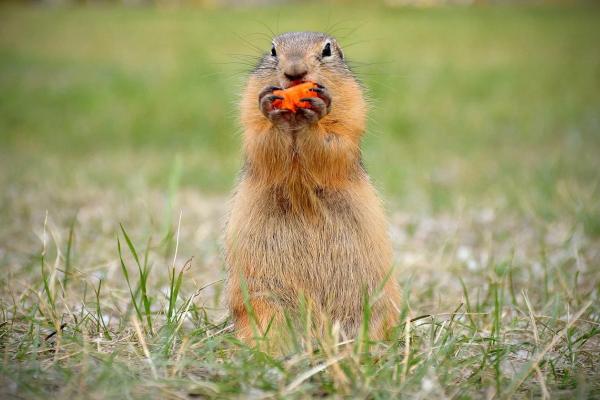Each year on 2 February, the town of Punxsutawney, Pennsylvania, hands the weather forecast to “Punxsutawney Phil,” a celebrity groundhog who allegedly predicts the length of winter. Though Phil works just one day a year, his fame has made marmots the most recognized burrowing mammals in North America. Yet these robust rodents are just as integral to the mountain meadows of Europe and the high plateaus of Asia. This article takes a comprehensive look at the marmot genus (Marmota): what they look like, where they live, how they make a living, and why their social tunnels are engineering marvels of the alpine world.

| Trait | Description |
|---|---|
| Taxonomy | Order Rodentia · Family Sciuridae · Genus Marmota (15 recognized species) |
| Body mass | 3 – 7 kg, making them among the heaviest wild rodents of the Northern Hemisphere |
| Build | Broad head, short neck, stout trunk; limbs short but powerfully muscled |
| Tail | Short and thick (about one-quarter to one-third of body length) |
| Fur | Two layers: a dense woolly undercoat and long, coarse guard hairs whose pale tips give many species a frosted look |
| Cold-climate adaptations | Small ears and compact extremities minimize heat loss; subcutaneous fat layer thickens before winter |

Northern Hemisphere exclusive
North America: Alaska, most of Canada, and the Rocky and Appalachian ranges of the United States.
Eurasia: European Alps, Pyrenees (reintroduced in the mid-20th century), Carpathians, highlands of Central Asia and Mongolia, Himalayan ranges, and northeastern Siberia.
Elevation bias
Fourteen of the fifteen species favor alpine or subalpine turf between 1 500 – 4 000 m.
The exception is the woodchuck (Marmota monax), which tolerates lowland fields and forest edges.
Landscape types
Open alpine meadows, steppe grasslands, tundra, and lightly wooded slopes.
Dense forests and marshlands are avoided because they hinder predator detection and burrow drainage.
Pleistocene legacy
Current distribution mirrors the advance and retreat of Ice Age glaciers. As ice sheets withdrew, isolated marmot populations evolved into today’s distinct species.

Marmots are classic high-latitude herbivores with a crucial twist: everything they eat between snowmelt and the first hard frosts must fuel half a year of underground torpor.
Primary foods
Tender grasses, sedges, clover, alfalfa, and the nutritious flowers of alpine composites.
Where available, they supplement with insects, young shoots, roots, and occasionally bird eggs.
Feeding behavior
Colonies forage in loose groups while one sentinel stands upright, scanning for eagles, foxes, or coyotes. At the first alarm whistle everyone sprints for safety.
Fat accumulation
Adults may increase body mass by 30–40 percent over the summer. This lipid reserve powers a metabolic rate that, during hibernation, drops to less than 5 percent of normal.

| Aspect | Details |
|---|---|
| Activity pattern | Diurnal; most active on sunny mid-mornings and late afternoons when alpine temperatures peak |
| Social structure | Varies by species. Eurasian alpine marmots form tight family groups; North American woodchucks are largely solitary except in the breeding season. |
| Tunnel system | Main galleries can exceed 20 m in length and 2–3 m in depth, with separate chambers for sleeping, rearing young, food storage, and a latrine. |
| Seasonal quarters | Some species maintain one burrow year-round; others dig a special winter den with fewer entrances and deeper insulation. |
Duration: 5–7 months, depending on latitude, elevation, and snow cover.
Physiology: Body temperature can fall below 5 °C; heart rate slows from 100–120 beats per minute to as few as 4–10.
Arousal bouts: Many species periodically wake to pass urine and feces; a few remain in continuous torpor until spring thaw.

| Parameter | Typical Value |
|---|---|
| Mating season | Immediately after emergence in spring |
| Breeding frequency | Annual for most; Olympic marmot (M. olympus) breeds every two years |
| Litters per year | One |
| Litter size | Usually 4–5 pups (range 3–8) |
| Sexual maturity | Around 3 years; some females delay first breeding to age 4 |
| Dispersal | Juveniles are evicted from the natal burrow during their third summer, reducing inbreeding and overcrowding |
Groundhog Day: The famed weather-predicting ceremony dates to 1887 and echoes European Candlemas folklore, which associated a hedgehog’s shadow with lingering winter.
Ecological role: Marmot burrowing aerates soil, redistributes nutrients, and creates microhabitats used by plants, insects, reptiles, and birds such as snow finches. They are also a key prey for golden eagles and mustelids.
Threats:
Habitat fragmentation from ski resorts, roads, and pasture improvement.
Climate warming, which shortens snowpack duration and can disturb hibernation energetics.
Localized hunting for meat and pelts.
Status: Most species are still relatively secure, but several, including the Tarbagan marmot (M. sibirica) and the Himalayan marmot (M. himalayana), are monitored for population declines linked to habitat loss and overharvest.
| Common name (scientific) | Region | Altitude preference | Sociality | IUCN status |
|---|---|---|---|---|
| Alpine marmot (M. marmota) | European Alps, Carpathians | 1 800 – 3 200 m | Highly social | Least Concern |
| Woodchuck (M. monax) | Eastern and Central USA/Canada | 0 – 1 000 m | Mostly solitary | Least Concern |
| Black-capped marmot (M. camtschatica) | Kamchatka Peninsula | 800 – 1 600 m | Social colonies | Near Threatened |
| Tarbagan marmot (M. sibirica) | Mongolia, N China plateau | 1 000 – 3 000 m | Social colonies | Endangered |
Marmots are master adapters to harsh mountain climates: their dense fur, communal vigilance, and half-year hibernation let them exploit vegetation that many large mammals cannot. Their burrows reshape alpine soils, their whistles color local folklore, and their seasonal rhythms mark the high-latitude year as surely as the return of migrating geese. Protecting the open meadows and tundra they call home safeguards not just a charismatic rodent but an entire web of high-elevation life.
animal tags: Marmots
We created this article in conjunction with AI technology, then made sure it was fact-checked and edited by a Animals Top editor.